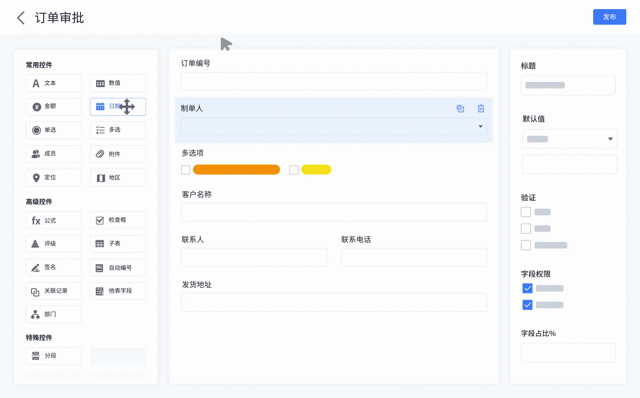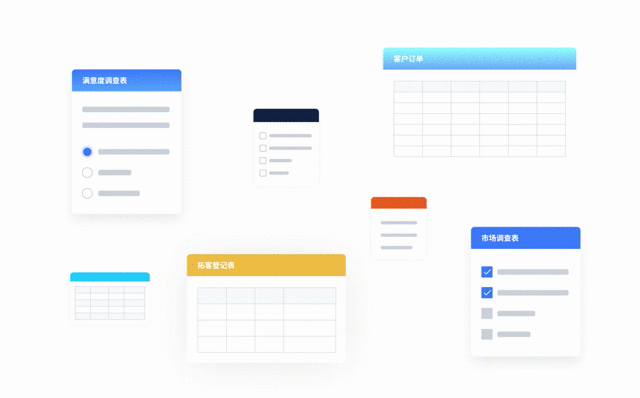Introduction
Introduction to Lancode
Lancode is a no-code application building platform. Through visual forms and workflows, it can flexibly, quickly, and efficiently build enterprise-level applications that meet business needs, such as CRM, invoicing, order management, production management, project management, etc.
Lancode considerably lowers the development threshold for enterprises, and everyone can build application systems, which increases development efficiency by multiples and saves development costs by more than half. A platform integrates all business data of an enterprise, breaks data silos, helps enterprises standardize business processes, and realizes multi-person collaboration. It is incredibly flexible and scalable, which you can use whenever needed, and therefore it can quickly respond to business changes and drive business growth.
Product core functions
1. Form engine: multi-person online collaboration, efficient collection and management of data
A form is the carrier of business data, and a form that fits the business can help companies collect and manage data better.
Lancode's form engine has a built-in visual form designer. You can build a WYSIWYG (what you see is what you get) business form by dragging and dropping field controls without coding, allowing you to quickly collect and manage data and realize multi-person collaboration through the data view of the form engine.
1.1 Features
Custom form: 20+ field controls, free to build powerful forms Related data: cross-form data association, breaking business data silos Public form: share the form externally and quickly collect data online Data view: multi-view configurations, multi-person collaboration on a single form Application permission group: define fine-grained permissions on demand
1.2 Business Scenarios
Event registration, questionnaire survey, employee files, online orders, scan code sign-in, etc.
2. Flow engine: transfer offline processes to online, automating repetitive tasks
Lancode's flow engine abstracts a series of business activities into different "process nodes" types, which are connected through the process editor. Enterprises can build workflows by combining different types of nodes and finally realize automated workflow and approval flow to improve business execution efficiency.
2.1 Features
Multiple trigger methods: form events, time events, member events, custom actions, packaged business workflows Various workflow nodes: approval, filling, notification, branch, sub-process, data node, etc. Diversified approval: Support multi-person counter-sign, or sign, conditional forwarding, add-on sign, signature, batch approval, and other functions Branch judgment rules: automatically judge the data direction according to the set conditions Automated workflows: scheduled execution of tasks, automatic addition, deletion, and modification of data
2.2 Business Scenarios
Approval flow: leave request, item application, procurement, contract approval, etc. Business flow: CRM opportunity promotion, work order assignment, etc. Workflow: synchronized data update, inventory threshold warning, deadline reminder, etc.
Report Engine: Easily grasp the business dynamic with a customizable data dashboard
Lancode's report engine can produce a large visual data dashboard, intuitively and efficiently display the core indicators of the enterprise, quickly grasp the operating status of the enterprise, and assist the enterprise in decision-making.
3.1 Features
Visual charts: Rich charts such as histograms, line charts, circular charts, and numerical charts Multi-dimensional analysis: custom data dimensions, multi-dimensional insights into business development trends Free exploration: flexible data filtering and sorting, assisting users in insight into business changes Custom page: personalized theme page, custom build dashboard/cockpit
3.2 Business Scenarios
Sales funnel, customer analysis, purchase summary, cost comparison, revenue trend, etc.


